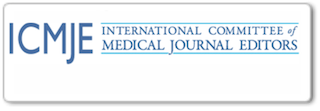Betel Leaf Extract’s Effect (Piper Batle Linn) on The Healing Process of Incision Wounds in Rats (Rattus Norvegicus)
Abstract
An incision wound is a wound that is intentionally made by a clean-cut using a sharp object. Betel leaf is a natural ingredient that helps the wound healing process because it has active ingredients such as saponins, tannins, flavonoids, essential oils, and alkaloids. The study aimed to determine the effect of betel leaf extract on the healing process of incision wounds in white rats. This study uses a true experimental research design conducted on white rats. Samples were taken by random sampling and divided into four groups, namely control group (KK) (n = 6), treatment group with a dose of 10% (P1) (n = 6), treatment group with a dose of 15% (P2) (n = 6) and treatment group with a dose of 20% (P3) ( n = 6). The mean of wound’s length in KK=0.78 cm, P1=0.67 cm, P2=0.57 cm, and P3=0.15. Based on the Kruskal Wallis test, p value=0.000(α<0.05), there is a significant difference in the wound healing process between the control and treatment groups. Betel leaf contains active substances, namely flavonoids, alkaloids, saponins, tannins, and essential oils. The active substance causes the wound’s edges to close faster, so the wound heals faster.
Keywords
References
Agrawal, A. (2018) ‘Unified classification of open fractures: Based on Gustilo and OTA classification schemes’, Injury, 49(8), 1526–1531.
Anheyer, D. et al. (2018) ‘Herbal Medicine in Children With Respiratory Tract Infection: Systematic Review and Meta-Analysis’, Academic Pediatrics, 18(1), 8–19.
Bauer, S. (2013) ‘Flexible electronics: Sophisticated skin’, Nature Materials, 12(10), 871–872.
Berardesca, E., Farage, M. and Maibach, H. (2013) ‘Sensitive skin: An overview’, International Journal of Cosmetic Science, 35(1), 2–8.
Darmawan, A. et al. (2021) ‘Betel Leaf Extract Efficacy on Wound Healing : A Systematic review’, STRADA Jurnal Ilmiah Kesehatan, 10(1), 526–536.
Etika, A. N., Nurrahayu, K. I. and Suharto, I. P. S. (2017) ‘Effect of Ginger Extract (Zingiber Officinale Roscoe) on the Number of Fibroblast Cells in Rats (Rattus Norvegicus)’, Journal of Nursing Care & Biomolecular, 2(1), 10–14.
Feng, C. J. et al. (2019) ‘Adipose-derived stem cells-induced burn wound healing and regeneration of skin appendages in a novel skin island rat model’, Journal of the Chinese Medical Association, 82(8), 635–642.
Herryawan, H. and Sabirin, I. P. R. (2018) ‘The effectiveness of red betel leaf (Piper crocatum) extract against periodontal pathogens’, Bali Medical Journal, 7(3), 732–735.
Jenks, P. J. et al. (2014) ‘Clinical and economic burden of surgical site infection (SSI) and predicted financial consequences of elimination of SSI from an English hospital’, Journal of Hospital Infection, 86(1), 24–33.
Liu, Y. et al. (2020) ‘Natural indole-containing alkaloids and their antibacterial activities’, Archiv der Pharmazie, 353(10), 1–10.
Madhumita, M., Guha, P. and Nag, A. (2020) ‘Bio-actives of betel leaf (Piper betle L.): A comprehensive review on extraction, isolation, characterization, and biological activity’, Phytotherapy Research, 34(10), 2609–2627.
Mazumder, S., Roychowdhury, A. and Banerjee, S. (2016) ‘An overview of Betel leaf (Piper betle L.): A review’, Annals: Food Science and Technology, 17(2), 367–376.
Misiakos, E. P. et al. (2014) ‘Current Concepts in the Management of Necrotizing Fasciitis’, Frontiers in Surgery, 1(September), 1–10.
Mohanty, C. and Sahoo, S. K. (2017) ‘Curcumin and its topical formulations for wound healing applications’, Drug Discovery Today, 22(10), 1582–1592.
Peddapalli, H. et al. (2020) ‘Therapeutic potential of Piper betle : An amazing nature’s medicinal reservoir’, Chemistry Research Journal, 5(3), 62–75.
Prescott, S. L. et al. (2017) ‘The skin microbiome: Impact of modern environments on skin ecology, barrier integrity, and systemic immune programming’, World Allergy Organization Journal, 10(1), 1–16.
Roy, A. and Guha, P. (2018) ‘Formulation and characterization of betel leaf (Piper betle L.) essential oil based nanoemulsion and its in vitro antibacterial efficacy against selected food pathogens’, Journal of Food Processing and Preservation, 42(6), 1–7.
Suharto, I. P. . and Etika, A. . (2019) ‘Ginger Extract (Zingiber Officinale Roscoe) Affects Incision Wound Collagen Fiber Density’, Care, 7(1), 27–36.
Suharto, I., Rahayu, K. and Etika, A. (2017) ‘The Effect of Ginger (Zingiber Officinale Roscoe) Extract to the Number of Neutrophil Cell in Incision Wound of White Rats (Rattus Norvegicus)’, Advances in Health Sciences Research, 2, 381–385.
Sulistyoning Suharto, I. P. et al. (2021) ‘The Effect of the Mahkota Dewa (Phaleria macrocarpa) on the Density of Collagen Incision Wounds’, Journal of Physics: Conference Series, 1899, 1-5.
Tirayo, A. J., Munir, M. A. and Hutasoit, G. A. (2016) ‘The Comparison Of Inhibitory Effect Between Antiseptic Soap With Betel Leaf Extract ( Piper Betle Linn ) On The Growth Of Escherichia Coli’, Jurnal Ilmiah Kedokteran, 3(3), 31–39.
Yang, C., Wu, H. and Wang, J. (2019) ‘Formulation and evaluation of controlled-release of steroidal saponins-loaded collagen microspheres’, Materials Technology, 34(9), 534–539.
Zhao, Y. et al. (2020) ‘Antibacterial activity of tea saponin from Camellia oleifera shell by novel extraction method’. Industrial Crops and Products, 153, 1-10.
DOI: https://doi.org/10.17509/jpki.v7i2.40359
Refbacks
- There are currently no refbacks.
Jurnal Pendidikan Keperawatan Indonesia(JPKI) published by Indonesia University of Education. JPKI is licensed under a Creative Commons Attribution-ShareAlike 4.0 International License.
Office :
Nursing Department. FPOK UPI.
229, Dr. Setiabudhi Street. Bandung 40154
West Java , Indonesia
E-mail : jpki@upi.edu

_.png)
_.png)
_.png)











